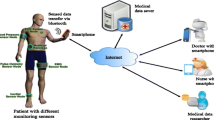Abstract
Collecting sensor data through wireless Internet protocol with cloud computing is a new IT architecture and many applications are adopting similar framework of Internet of Things based on it. For sensor devices, cloud environment can be applied to reduce their computing resource limitations to store, index and process their data. Besides, there are several concerns on communication between them in terms of security and privacy issues. In this paper, we focus on paid user authentication methods for the communication in Korea. System managers’ survey on their preferences based on given criteria shows overall priority of security investment. Survey results show system experts have diverse opinions on paid authentication methods based on convenience, security level and operational cost. To review the current challenges of paid authentication method, we scrutinize recent survey results on authentication methods in terms of Internet of Everything framework. Also we compare the well-defined data security requirements in Internet services with current devices to check its compatibility to protect personal data from the security perspective.
Similar content being viewed by others
References
Anderson, R., & Moore, T. (2006). The economics of information security. Science, 314(5799), 610–613.
Armbrust, M., et al. (2010). A view of cloud computing. Communications of the ACM, 53(4), 50–58.
Camp, O., et al. (Ed.). Information systems security and privacy: First International Conference, ICISSP 2015, Angers, France, February 9–11, 2015, Revised Selected Papers. Springer, 2015.
Cardenas, A. A. et al. (2008). Research challenges for the security of control systems. In Proceedings of the 3rd conference on Hot topics in Security, 2008.
Cirani, S., et al. (2015). IoT-OAS: An OAuth-based authorization service architecture for secure services in IoT scenarios. IEEE Sensors Journal, 15(2), 1224–1234.
Gordon, L. A., & Loeb, M. P. (2002). The economics of information security investment. ACM Transactions on Information and System Security (TISSEC), 5(4), 438–457.
Gubbi, J., et al. (2013). Internet of Things (IoT): A vision, architectural elements, and future directions. Future Generation Computer Systems, 29(7), 1645–1660.
Kim, W. (2009). Cloud computing: Today and tomorrow. Journal of Object Technology, 8(1), 65–72.
KISA. (2015). Survey on industrial security activities in 2015. http://isis.kisa.or.kr/board/?pageId=060200&bbsId=15&itemId=53&pageIndex=1.
Mell, P., Grance, T. (2010). The NIST definition of cloud computing. Communications of the ACM, 53(6), 50.
Miorandi, D., et al. (2012). Internet of things: Vision, applications and research challenges. Ad Hoc Networks, 10(7), 1497–1516.
Popovic, K., Hocenski, Z. (2010). Cloud computing security issues and challenges. In MIPRO, 2010 proceedings of the 33rd international convention. IEEE, pp. 344–349.
Purser, S. A. (2004). Improving the ROI of the security management process. Computers and Security, 23(7), 542–546.
Yao, X., et al. (2013). A lightweight multicast authentication mechanism for small scale IoT applications. IEEE Sensors Journal, 13(10), 3693–3701.
Zhang, Q., Cheng, L., & Boutaba, R. (2010). Cloud computing: State-of-the-art and research challenges. Journal of Internet Services and Applications, 1(1), 7–18.
Acknowledgments
This research was supported by a 2015 Research Grant from SangMyung University.
Author information
Authors and Affiliations
Corresponding author
Rights and permissions
About this article
Cite this article
Kim, J.Y. Efficiency of Paid Authentication Methods for Mobile Devices. Wireless Pers Commun 93, 543–551 (2017). https://doi.org/10.1007/s11277-016-3286-9
Published:
Issue Date:
DOI: https://doi.org/10.1007/s11277-016-3286-9




